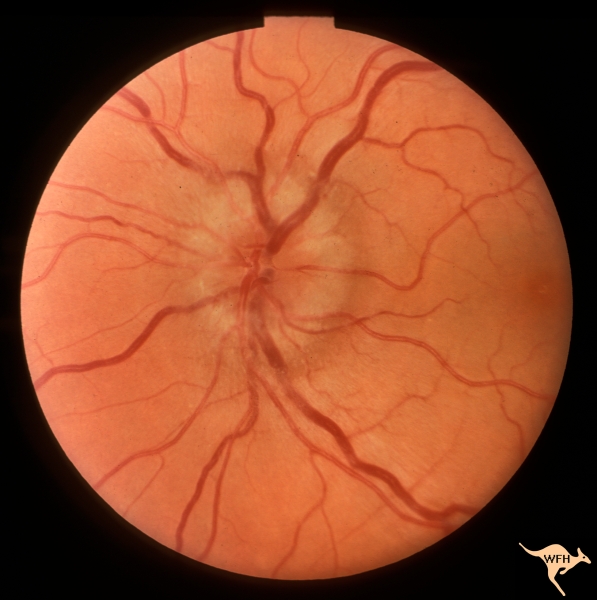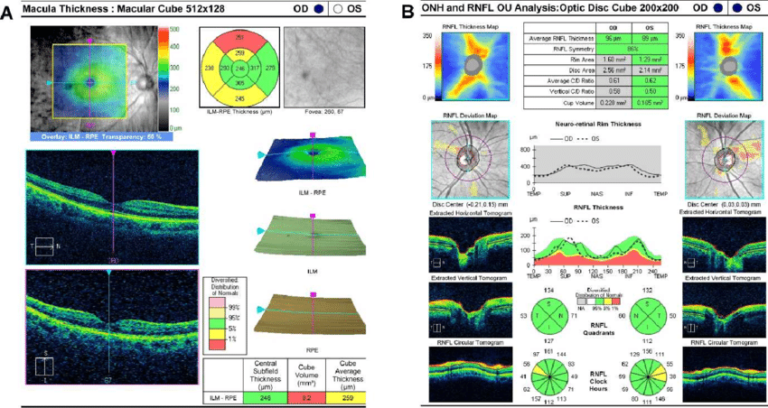Papillitis-causes, symptoms, diagnosis and treatment
Papillitis is the type of optic nerve neuritis, in which there is the inflammation of optic disc. The optic nerve plays role in transmitting visual information from the eye to the brain, and any disruption in its function results in vision problems. The optic disc, also known as the optic nerve head, is located at the back of the eye and serves as the point where the optic nerve connects with the retina. Inflammation in this area disrupts the normal transmission of visual information, causing a range of vision-related issues. Due to inflammation, there is swelling on the optic nerve head.

What is optic disc
The optic disc is a small, circular area located at the back of the eye. It is where the optic nerve exits the eye and connects to the brain. The optic nerve is the second cranial nerve which consists of millions of nerve fibers that transmit visual information from the eye to the brain.
Causes
Papillitis can have various underlying causes, which include:
- Viral, bacterial, or parasitic infections can trigger optic nerve inflammation. Conditions such as syphilis, tuberculosis, or Lyme disease are associated with papillitis.
- Diseases like multiple sclerosis and neuromyelitis optica can lead to papillitis as a result of the immune system mistakenly attacking the optic nerve.
- Conditions like sarcoidosis, granulomatosis with polyangiitis, or lupus can be linked to papillitis.
- In some instances, the cause remains unknown (idiopathic), with no identifiable underlying medical condition
Symptoms for optic nerve papillitis
Individuals with papillitis often experience a sudden reduction in visual acuity in one or both eyes
- Reduction in color vision and contrast sensitivity
- Defects in visual field
- Changes in pupillary reaction
- The patients present with odematus optic disc
- Patients can complain about flashing lights, blind spots, or halos around lights
Diagnosis
Taking medical history
The ophthalmologist will ask about your symptoms, the duration of your visual problems, and any relevant medical conditions or recent illnesses.
Clinical examination
The next step is a thorough clinical examination, which may include the following:
Visual acuity testing
Contrast sensitivity and color vision tests
Visual field testing– to checks for blind spots and peripheral vision loss, which can be a common symptom in papillitis
Ophthalmoscopy– to examine the optic disc and the surrounding structures at the back of the eye.
The appearance of the optic disc can provide valuable information about eye health. A healthy optic disc typically appears as a round, well-defined, pinkish structure with a central depression known as the cup.
Visual Evoked Potential (VEP)-to measures the electrical activity in the visual pathway, which can help confirm the presence of optic nerve inflammation
Magnetic Resonance Imaging (MRI)- An MRI may be recommended to assess the brain and optic nerve for structural abnormalities or other potential causes of the symptoms.
Blood Tests- to check for underlying conditions, such as autoimmune diseases or infections, which could be contributing to papillitis
Treatment
- Corticosteroids can help reduce inflammation and manage symptoms. In severe cases, high-dose intravenous steroids may be recommended.
- When the inflammation is associated with an underlying health issue (systemic or auto-immune), addressing that condition is essential.
- Analgesics or pain relievers are given to lower the pain and discomfort
- Proper hydration, rest, and eye protection are important during the recovery phase
Prognosis
The prognosis for optic nerve papillitis varies, but most individuals experience some degree of visual recovery. Long-term management may include regular follow-up visits, vision rehabilitation, and addressing any underlying health issues. In some cases, individuals may be at risk of recurrent episodes.
Recurrence chances
Papillitis may not fully resolve with initial treatment. Residual inflammation or damage to the optic nerve can increase the risk of recurrence, especially if the underlying cause remains unaddressed. Diagnosing and managing the underline cause will help to eradicate the infection.
Stress and lifestyle factors, including smoking and excessive alcohol consumption, can influence the immune system and increase the risk of recurrent episodes of papillitis.
Eye conditions involving optic disc
Several eye conditions can affect the optic disc, including
Glaucoma
It is a group of eye diseases characterized by increased intraocular pressure. This pressure can damage the optic nerve, leading to changes in the optic disc appearance and potentially causing vision loss.
Papilledema
This condition occurs when increased intracranial pressure causes swelling of the optic disc. Papilledema can be a sign of serious underlying health issues.
Founder of EyesMatterMost- an optometry student who loves talking about eyes. I tend to cover topics related to optometry, ophthalmology, eye health, eyecare, eye cosmetics and everything in between. This website is a medium to educate my readers everything related to eyes.

